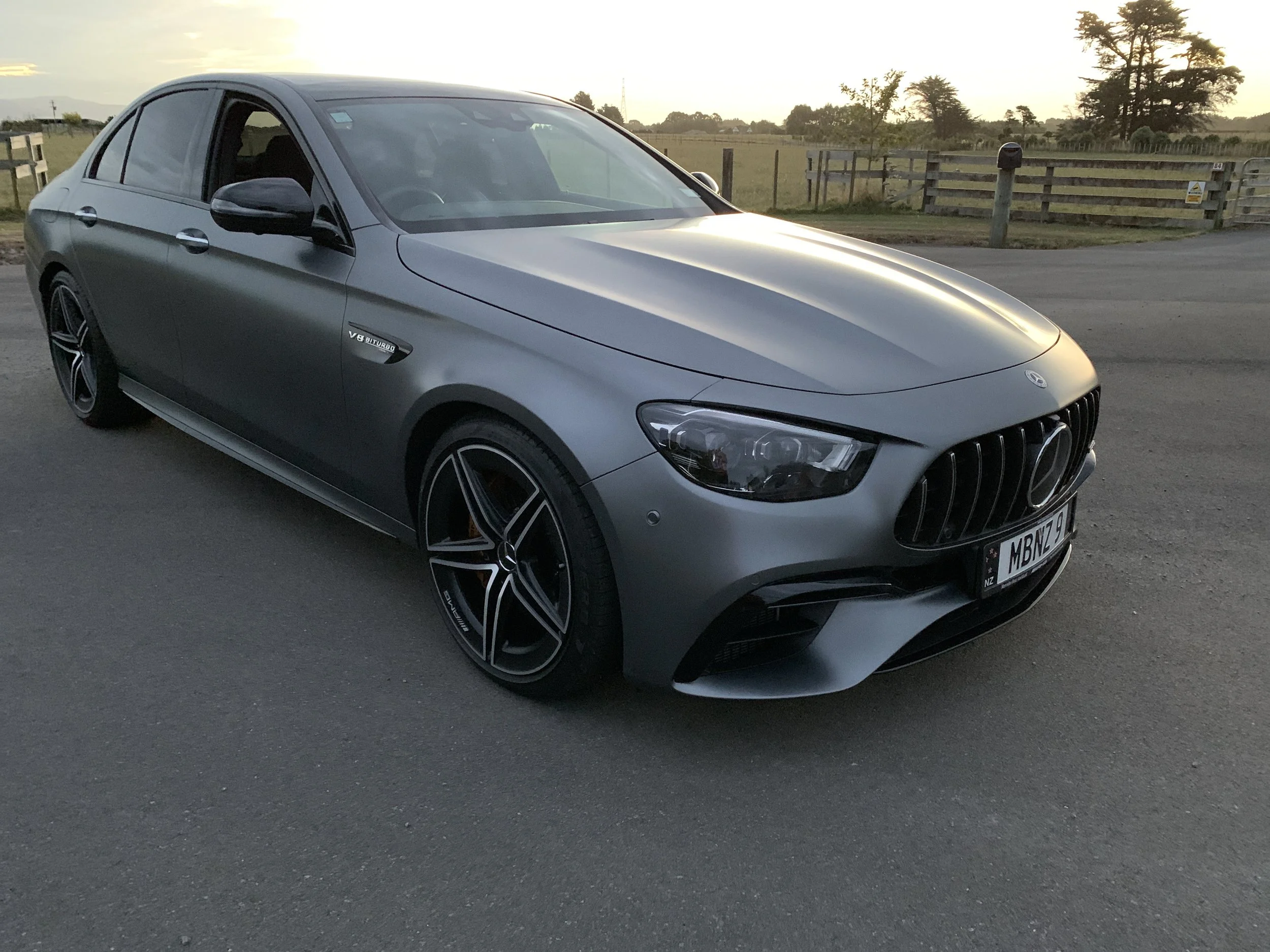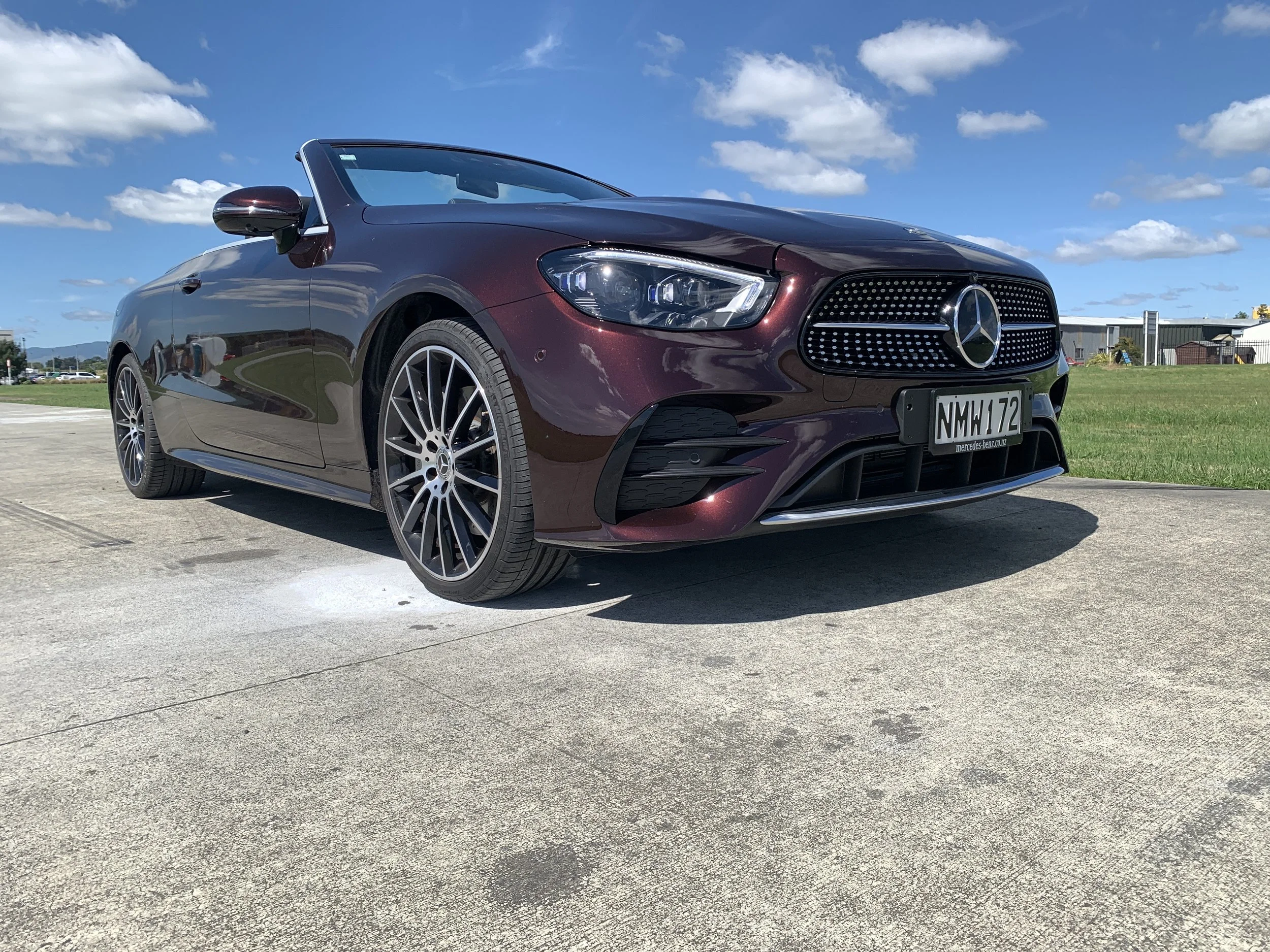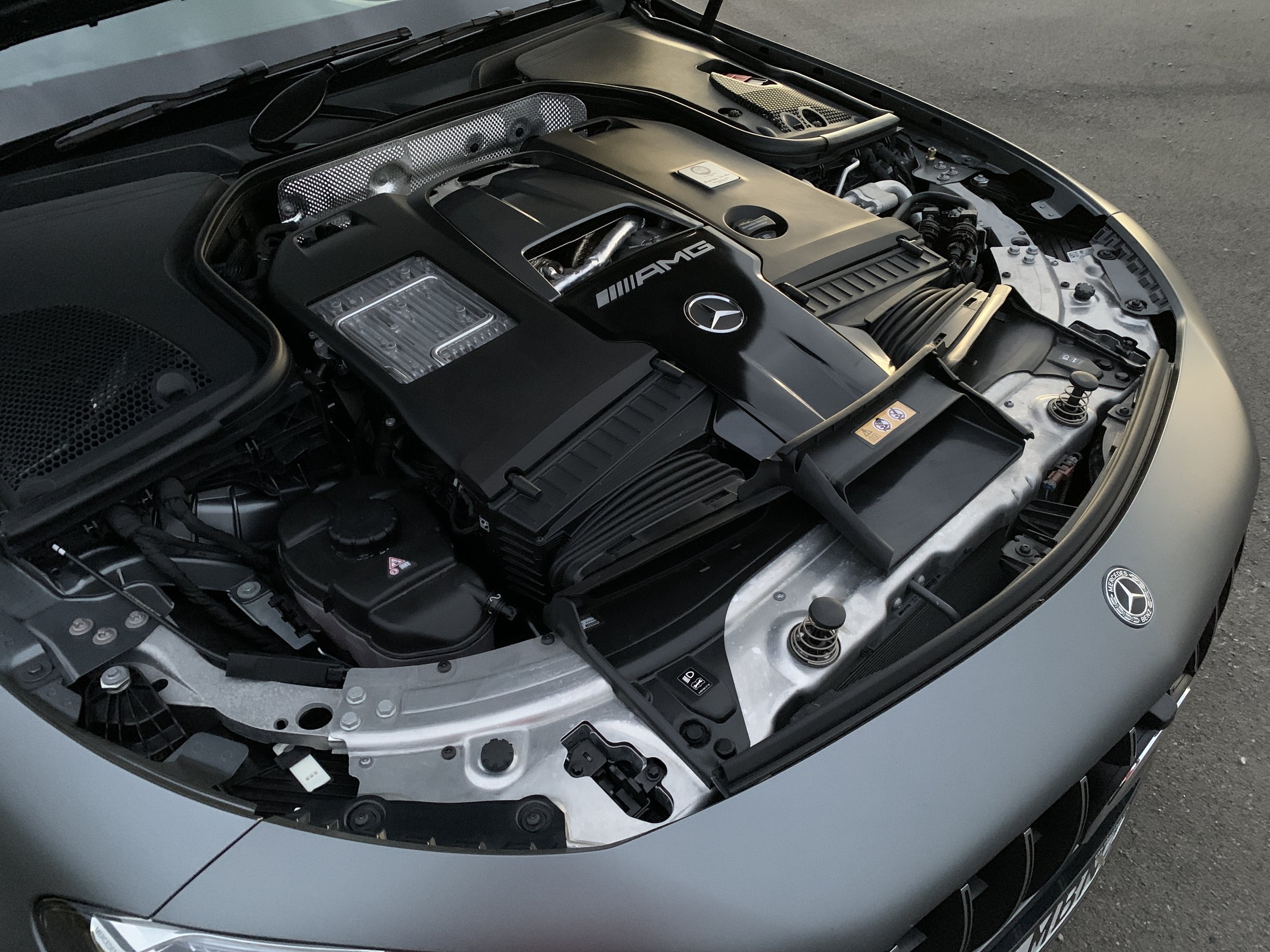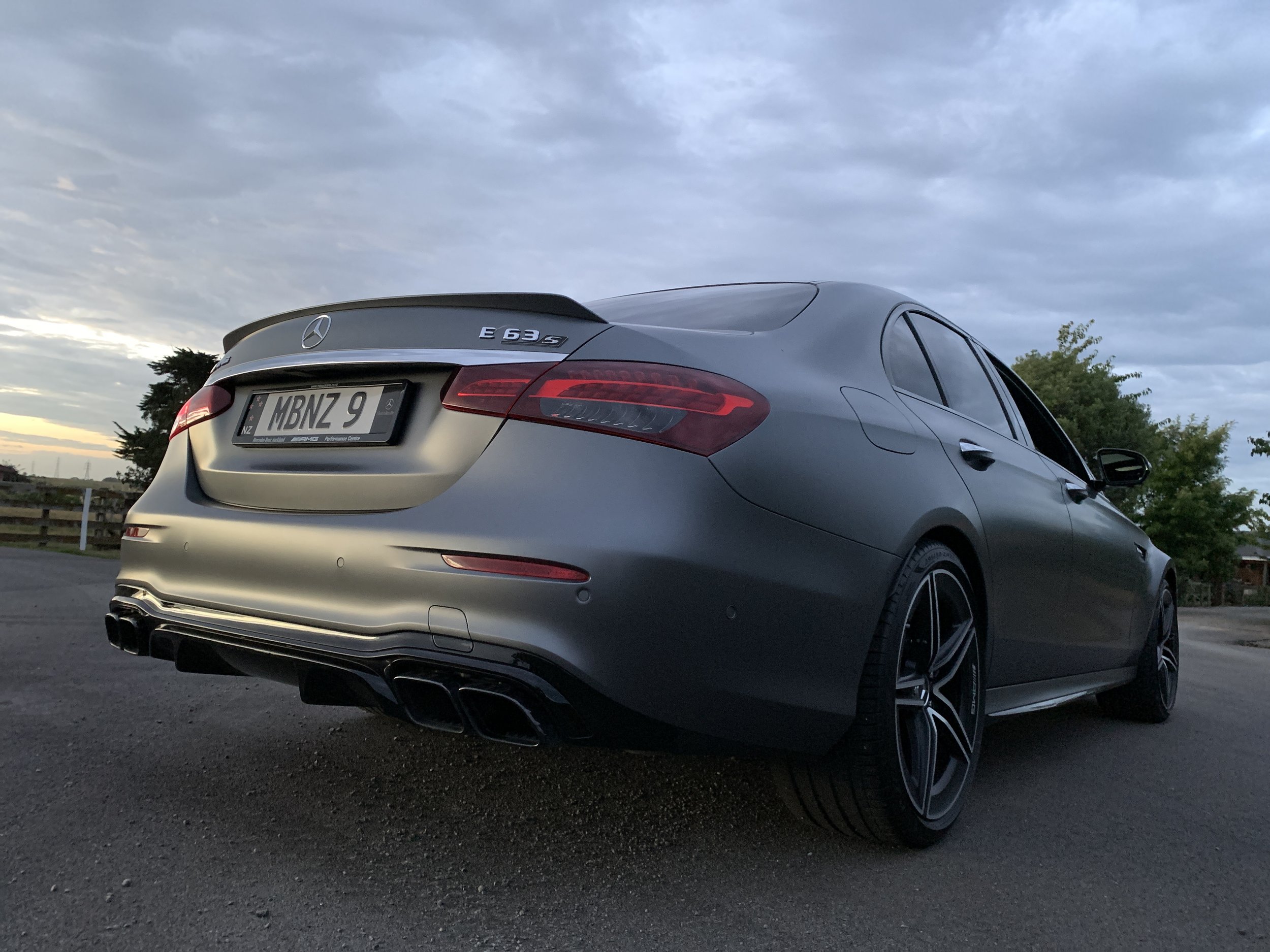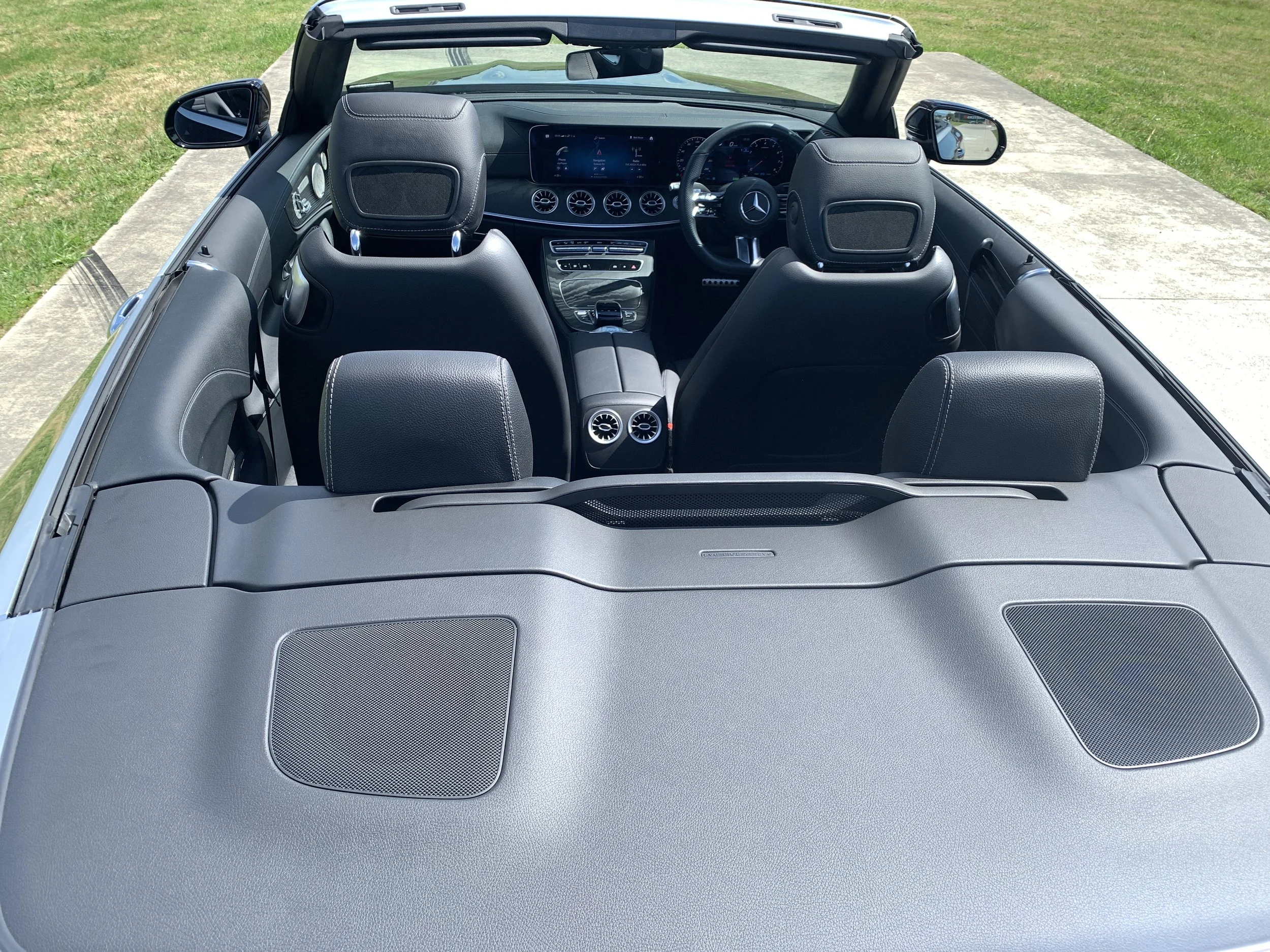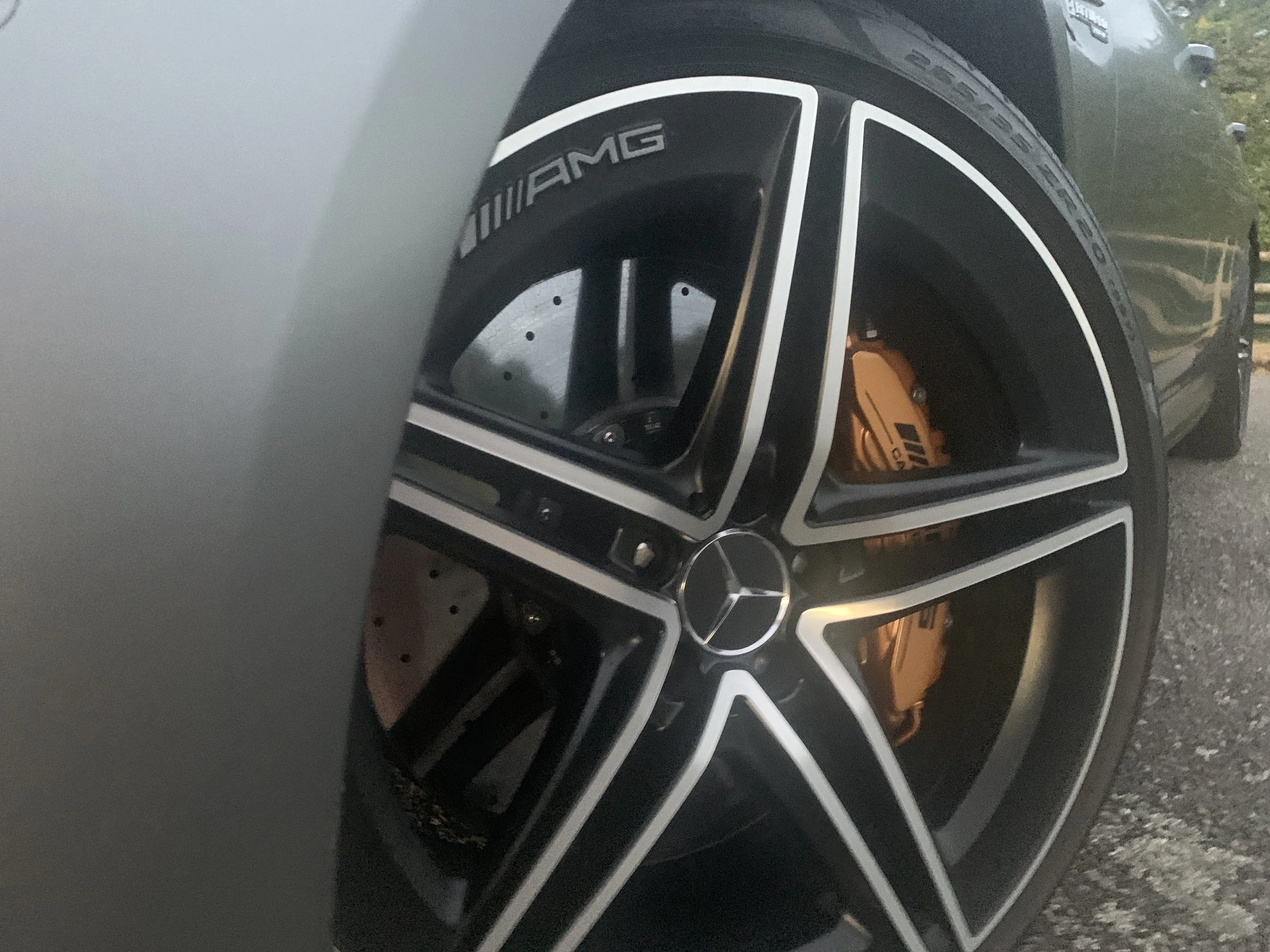Mercedes-Benz E 350 Cabriolet and Mercedes-AMG E 63 S roadtest review: Why E is no poor score
/Experiencing the crusher and the cruiser editions of this medium model is no hardship.
Prices as tested: $153,300 (E 350 Cabriolet), $262,200 (E 63 S)
Powertrain and economy: 2.0-litre turbo-petrol inline-four, 220kW/400Nm, 9-speed automatic, RWD, combined economy 7.8L/100km, CO2 179g/km (E 350); 4.0-litre twin-turbocharged V8, 450kW/850Nm, 9-speed dual-clutch automatic, AWD, combined economy 12.3L/100km, CO2 282g/km (E 63 S).
Vital statistics: 4835mm long, 1605mm wide, 1428mm high, 2873mm wheelbase, luggage capacity 385 litres, 20-inch alloy wheels (E 350); 4984mm long, 1868mm wide, 1463mm high, 2939mm wheelbase, luggage capacity 540 litres, 20-inch alloy wheels (E 63 S).
Like: E 350’s roof-down refinement; E 63’s stonk and technology.
Don't like: E 63’s special Selenite Grey Magno paint would be a nightmare to live with; overly cautious speed adjusting tech for active cruise control.
EXPERIENCING two specialist editions of Mercedes’ E-Class is catching another model on brink of evolutionary change.
The E 350 cabriolet and the AMG E63 S are almost at a point of see-you-later status, but not just because this is a time of electric-propelled rebirth for the world’s oldest car maker.
Patently, there is a full electric E coming our way; that model, the EQE (see what they did there?) will likely become locally provisioned before year-end, in fact.
But this breakthrough model is set to stand as an adjunct rather than a whole new commitment, because another E-Class that maintains something of a fossil fuel allegiance is also coming to the boil, with international release expected in 2023.
Fact is, keeping a nameplate that’s been around for 30 years in a combustion-engined format is still important. lthough sales of these models are declining in favour of sports utilities, the E is still a very strong performer, representing 16 percent of the brand’s business, with more than 300,000 sales in a year of huge global uncertainty.
Sightings of prototypes under development suggest tomorrow’s E-Class will head along the same styling path that has shaped the latest C-Class and the S-Class, inside as well as in body shape.
Expect to see it take the same portrait-orientated touchscreen system rising out of the centre console that now runs in those others.
That’s possible because, of course, the E is the next Benz to move to the Mercedes MRA2 platform those others already now use; this architecture is purpose-designed to enable the car to make a big leap forward, technology-wise.
That also affects the drivetrains. As much as the E-Class will stick with 48-volt mild-hybrid petrol and even (in Europe) diesel engines, plus plug-in hybrid power – and let the EQE establish as the full EV choice – there’s every likelihood it will follow the C-Class and commit utterly to four-cylinder powerplants.
There’s high likelihood that a new E300e will team a 2.0-litre turbocharged petrol unit with this new tech, enabling a range of more than 100km on battery power.
What AMG has planned for the new E-Class is still unknown, although high-performance versions of the next model will arrive a little while after the core sedan is launched.
The next AMG C63 will move to a new plug-in hybrid four-cylinder set-up producing up to 463kW; will the next E63 go the same way? Or will it, as others suggest, retain the trademark twin-turbo 4.0-litre V8 that features in the current-gen car on test today, offering 450kW?
Argument about keeping the V8 simply because it is so intrinsic to the whole experience is not without foundation. As much as it is no great friend of the Earth – with the test example at times burning through its high-octane load at a rate of, erm, more than 16 litres per 100km - there’s undoubtedly something truly special about that ‘big hammer’ eight cylinder.
The stomp, the fact that it’s a hand-built engine unit displaying the assembler’s name. And, of course, there’s also the wonderfully woofly soundtrack. Mustn’t forget that.
In respect to the latter, though, the first comment made to me from a staffer at the dealership from where I picked up the car for test was how unfortunate it was that the 2022 S was less loud than its pre-facelift predecessor.
That remark surprised me because, in isolation, this latest car isn’t afraid to ‘express’. But, sure enough, fire up the older version and … wow, yes, with that one the trademark AMG V8 baritone IS louder. This isn’t AMG acting by choice; Europe’s ever-tightening emissions and drive-by noise regs, in case you wondering, are so punitive it really had to lower the volume.
But those rules aren’t a gag order. It’s no mouse. Snick the drive programme into a performance setting and your neighbours (and their’s) will be in no doubt about the kind of hungry beast is hunkering in your driveway.
Also, even though the ultimate sound is turned down, the absolute sizzle is not. Quite the opposite: In the week of test, Aston Martin announced its DBX 707, which has the same engine in identical tune … and is stated by its maker to be the world’s fastest production SUV.
In any event, find the appropriate location, hit the throttle and … Mein Gott! They say 0-100kmh is a 3.5 second affair. I didn’t bother to double-check the official timepieces. All I know is that you need to keep sharp once it rips off, because there’s very little time beyond that point before it is reaching for the kind of “who me, officer?” pace that used to make Sunday newspaper front page headlines.
With this example, there was surety of being able to slow at least as quickly as it would surge, as it was equipped with Brembo carbon-ceramic brakes. These are an option most won’t take, as they bump the price up by – yes, best sit down - $15,900. I don’t imagine they provide any additional enhancement to the daily driving experience, but if you were in the habit of using this car for track day fun, then the spend would be worth it. AMG’s regular braking package is very decent in its own right, but these stoppers are something else.
As much as the kick-off says so much, the oomph through the mid to high-range is just as awesome. Overtaking is a finger-click thing, such is the wall of wallop. For sure, the E-Class is a heavyweight in kilo count, but all that torque offsets the weight.
It all sounds a bit feral, perhaps, but that’s not a word that really applies; AMG engineering is just too perfect, too precise. None carry the burden of expectation quite so heavily as those already at the top of their game: One false move, even a tiny slip, and potentially it is game over or, at the very least, abdication from the throne.
Assuredly, there seems no sign of even the slightest corner-cutting in the mechanical package. That’s why this experience costs so much. You’re paying for, and getting, exceptional expertise in engineering.
As much as its actions speak louder than its outrageous looks and despite it being patently obvious that it is not out to make life too easy - this being, after all, a world-beating sports sedan designed to butt heads with the BMW M5 - what enduringly impresses is that it isn’t so much of a mad dog that every involvement is tinged with trepidation.
As heroic as it is, and as much as it is a car with will suit drivers who have reasonable talent – and it certainly shouldn’t be left in the hands of L-platers - it certainly doesn’t absolutely demand that you have a racing pedigree to work it.
Sure, even with all-wheel-drive and super-fat tyres, you need show some degree of care in order to keep that prodigious power in check when road conditions become dodgy. I was pleased Cyclone Dovi hit two days after the test, and not during it (even though the storm’s onset chimed with, and somewhat compromised, cabriolet time).
There’s delivers genuine deftness to the operability. That a car of this kind will feel sensitive to the touch and offer superb balance and brilliant stability reminds that the Affalterbach involvement is much, much more than just a visual beef up.
Sensibility requires a ‘Comfort’ mode that removes quite a lot of the ‘edge’. Some might think it is possibly too soft, and I must admit to often turning the setting on start up immediately to the initial sport placement, if only because the exhaust note has more bite to its bark here.
The ultimate is a Race setting, but be warned. It’s extremely ferocious; the equivalent of a tiger having been shown prey after a prolonged period of hunger. In this the car is mental and anyone prepared to man-up to its delivery needs, for everyone else’s well-being as much as their own, to find the right time and place. You can deactivate the stability control, run the nine-speed direct shift box in full manual and run it entirely in rear-drive … but, well, I’d suggest all that demands careful thinking.
Consumer expectation that the ultimate executive express should also deliver as a velvet-wrapped hammer means the interior must have significant luxury; that’s an easy accomplishment with the E-Class anyway. The cabin is very Mercedes’ familiar yet AMG-bespoke, in terms of unique seats, steering wheel, instrumentation and a few special switches and buttons, including activators to fast-lane to favourite performance settings.
The sports chairs can through entirely electronic adjustment, be shaped just-so for any body size. A bit of fiddling is required to get the angle and support exactly right but the effort is worthwhile as you’re left feeling so at one with the car that it, in turn, feels almost an extension of your own body.
The E-Class is a roomy car and, though the bigger chairs take up more space, it remains commodious for up to five adults. Whether you’d want to be in the back when the driver’s getting truly serious is another matter, of course. The boot is also large. Mercedes’ MBUX functionality is really good; the menus are logical to use and there’s always voice activation to help out if you become fuddled.
Going to the E350 after all that AMG bang-bang was a calming experience; the cabriolet is, quite literally, a soothing breath of fresh air.
Dropping the roof and allowing Nature in is always a nice treat; lifting the lid only occasioned once Dovi disappeared, but I got in a two-hour open road al fresco run and it was pretty comfy.
You need to keep the side glass up to create a cocoon of still air comfort, but the E-Class is large enough that even a tall driver can easily snuggle down out of the slipstream.
There’s a vestige of turbulence rolling into on the back of your neck that is easily combatted; you can either put some warm air through the Airscarf vents at the base of the headrest or slot up the very effective air blocker, a plastic screen which rises from behind the back seat at push of a button. It could well be less comfortable for any rear-seat passengers – chances are they will very likely be more exposed to the elements – yet for those occupying the front seats, it’s very pleasant on a warm, fine day.
And when the weather is at the other extreme? I picked up the car out of Wellington on a Friday evening, having flown in just as the cyclone started to rock the capital. The plane barely got in and the weather worsened from there on; the run back to my Manawatu home was in increasingly heavy rain. Not nice, but it did reinforce how superbly Mercedes designs the soft top roof. Not only is it fully weather resistant, but it’s also impressively sound-proofed. Also, while it does make the cabin feel rather buttoned-up, the roof is not so low as to make it seem too enclosed. There’s as much front head room as in the sedan.
If you want an idea about how a large Benz might be with four-cylinder power, this is the car: The ‘350’ these days is a 2.0-litre turbo petrol and not, as was once the case, a six-cylinder.
You’d think there’s good chance that anyone ignorant of this might never twig; the surging step-off that the V6 delivered isn’t quite emulated, but it is still a powerful engine and, more importantly given that this ultimately something of a cruiser, a very smooth and well-mannered one.
Much of that pedigree is due to it being meted a 48-volt mild hybrid system; not only does this bulk up the power but in also pitching in optimal additional 10kW and 150Nm at crucial moments, such as start off and in sudden accelerations, it acts to fill in for any power troughs that might occur with a four were it to be acting in isolation.
Performance isn’t anything as monstrous as the AMG’s, of course; the assistance from a belt-driven starter motor/generator is largely quite discreet. And while there’s more than enough edge to ease concern about it being an impediment to racier traffic, you tend not to hoof too hard, because for one, the engine does become a little coarse and, secondly, the car’s entire ethos of being a quietly stylish choice does tend to influence how it’s driven. I tended to find myself being lighter on the throttle and brakes. With such a grand view, too, when the top is down, there’s more opportunity to enjoy the day and the scenery.
The primary plus, from an engineering perspective, of the 48-volt system is that the engine will often unobtrusively switch off while the car is still rolling when coming to a stop, to help reduce fuel consumption. The overall average consumption of 9.9 litres per 100km suggests it’s no gimmick in that role.
The overall refinement of the car definitely stands out, but so too the technology loading. As standard the car will use sensors to park itself, can apply the brakes automatically if it detects a hazard, alerts you to unseen vehicles in your blindspot and will tell you if it thinks you’re getting drowsy and need a break. It also displays speed limit info from road signs in the instrument cluster. There’s a steering assistance which, when acting with the speed sensitive cruise control, allows a small amount of time for driving ‘hands off’; though it’s just measured in seconds and only when conditions are deemed safe. You cannot ‘play’ this system.
An update for this model’s final years has included implementation of a expansive ‘widescreen’ combination of two 12.3-inch digital displays. The one in front of you is endlessly configurable to show various combinations of driving information while the central one primarily manages communication and entertainment. You can control it all via touch-sensitive pads on the steering wheel, a control pad between the seats that, perhaps because I’m left-handed, I found pretty seamless or through voice via Mercedes’ ‘MBUX’ interface, assuming you don’t mind saying ‘Hey, Mercedes!’ each time you do so.
The graphics and presentation are brilliant and the displays really add to the classy ambience.
In terms of equipment E-Class cars have wireless charging for compatible devices, LED headlights and heated seats. This one had the extra features of a 360-degree parking cameras and augmented reality navigation overlaying real-time video of the road ahead with animated arrows.
Benz intent to amortise its three sizes (C, E and S) of cabriolet into one product on shouldn’t rattle those who favour this model. All indications are that, in respect to general dimension and interior space, it’s the mid-sized representation here that’ll continue with the incoming CLE.

